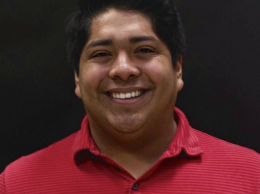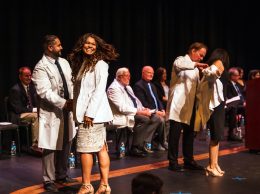The future of health care: Digital records and remote robots
People don’t have to die because of where they live or because the can’t access their own medical records.
That was the theme of the Jan. 18 program of the MIT Central Coast Enterprise Forum. Three area technology companies, InTouch Health, BioIQ and Active Life Scientific presented at the Santa Barbara event.
Michael Chan of Goleta-based medical robotics company InTouch said the next step for health care will involve using virtual models to connect acute care centers, such as Santa Barbara Cottage Hospital, to smaller communities.
Larger hospitals are moving from a cost control model to one that focuses on customer satisfaction and efficiency. “Telemedicine is not a black box,” said Chan, adding that it has to offer ease of use and speedy secure connections to doctors and other specialists.
In a video demonstration, Chan showed how a remote platform can enable diagnosis and consultation in real time with a laptop and a 4G wireless connection. Included is an integrated medical record with embedded video.
Davis Brimmer, CEO of Active Life, described a new process for measuring bone density in a way that does not involve breaking a patient’s limbs or relying on possibly unreliable images.
Working with inventor Paul Hansma of UC Santa Barbara, Active Life has built a test probe that can assess bone strength. Preliminary studies are 93 percent effective in judging bone breakage potential, the company said. Its customers now include major research institutions. “We are pioneering a whole new approach,” Brimmer said.
Justin Bellante of BioIQ said his company came about due to a hidden case of diabetes that led to one of his professors having a catastrophic stroke.
The idea was to create a suite of simple home tests that will deliver results online. In 2005, there was little appetite by individuals to pay out-of-pocket for diagnostic costs.
The corporate wellness trend among employers changed the game, he said, creating a bigger opportunity for a “Netflix for health care model.”
A product has to be interactive, scalable and able to interface with other tools and providers, he said, and measuring outcomes over a period of time is key.
[EDITOR’S NOTE: The Pacific Coast Business Times is one of the sponsors of the MIT Central Coast Enterprise Forum, and Science & Technology Editor Stephen Nellis organized and moderated the Jan. 18 event.]











